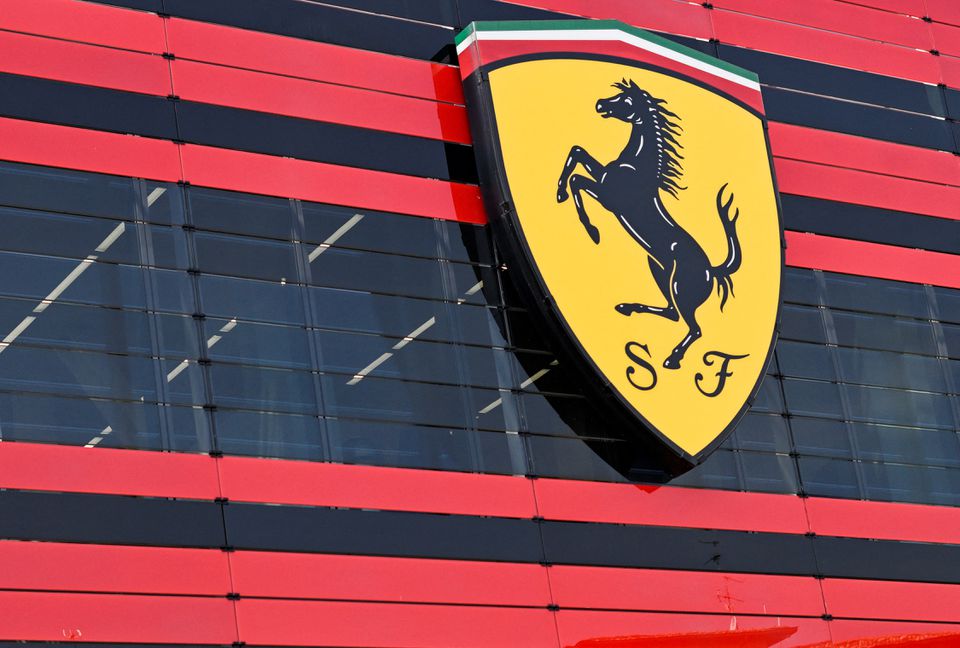- Co lifts FY core profit forecast to over 1.73 bln euros
- Sees margin on core profit around 35% this year
- Adjusted EBITDA rose 17% in Q3, above forecasts
- Shipments to China region rose 73% in July-Sept
MILAN, Nov 2 (Reuters) – Ferrari (RACE.MI) said it was confident about its prospects for this year and the next as demand for its luxury cars as well its pricing power remain strong despite broader economic worries in many of its main markets.
The Italian carmaker said orders for its new 390,000 euro ($385,000) Purosangue four-seater had outstripped even its most ambitious expectations. It has also pushed up prices by mid-single digit levels on its existing models to offset the impact of inflation.
Presenting third quarter results to analysts, Chief Executive Benedetto Vigna acknowledged the current macroeconomic scenario was bringing “new challenges on a global scale” both for Ferrari and its partners. But there were still plenty of wealthy buyers out there.
“We are also very positive for the next year. This is thanks to the order book that we have, that is spanning all the products we have as well as all the regions,” Vigna said.
“With the exception of a few models, our entire range is sold out.”
The company on Wednesday also raised forecasts for its full year 2022 results, including for core earnings, though it struck a more cautious note on margins.
Milan listed shares in the company fell as much as 3.5%, after results were released, as investors – who had been expecting the improved outlook – held back after a 7% rally in shares since mid-October. By 1550 GMT they were down 1.3%.
Analysts at Morgan Stanley said in a note that “full year 2023 should see tailwinds from volume, price/mix and forex.”
A double digit growth in shipments helped Ferrari beat expectations in the third quarter, with its adjusted core earnings rising 17% to 435 million euros.
With a 73% increase, the China, Hong Kong and Taiwan region scored the largest shipment growth in the quarter.
Shipments rose in all regions except in EMEA in the July-September period, driven by the ramp-up phase of the six-cylinder hybrid 296 GTB and of the 12-cylinder limited series 812 Competizione model.
Industrial costs and research and development expenses weighed for an additional 34 million euros on Ferrari’s quarterly core result, mainly due to higher depreciation and amortization and cost inflation.
The price mix also weighed, while foreign exchanges, including hedging contracts, had a positive effect.
Ferrari now forecasts its adjusted earnings before interest, tax, depreciation and amortization (EBITDA) to grow over 1.73 billion euros this year, versus a previous estimate of between 1.70-1.73 billion euros.
Margin on adjusted EBITDA was now seen at around 35% for this year, versus a previous guidance of over 35%.
($1 = 1.0128 euros)











